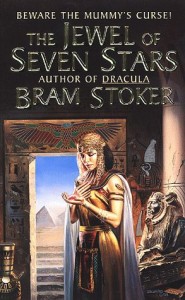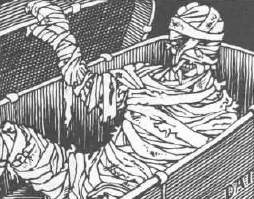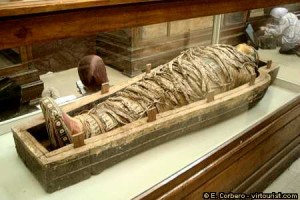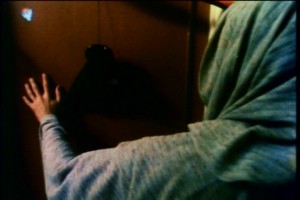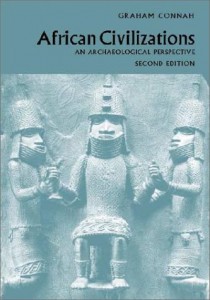 After Tom Hanks’ disappearance, his three friends are interviewed separately by a scary detective, who seems intent on trapping them in an admission that they play Mazes and Monsters. They’re perfectly willing to sell Hanks up the Mazes and Monsters river, though. They claim that he played with a Mazes and Monsters group whose identities are shrouded in mystery.
After Tom Hanks’ disappearance, his three friends are interviewed separately by a scary detective, who seems intent on trapping them in an admission that they play Mazes and Monsters. They’re perfectly willing to sell Hanks up the Mazes and Monsters river, though. They claim that he played with a Mazes and Monsters group whose identities are shrouded in mystery.
Detective: Who’d he play with?
Kate: I – I don’t know. He never talked about that part of it. … I don’t think he really realized how dangerous the game was.
Detective: (significant pause) Was Robbie a doper?
Finally the Detective explains his theory about Hanks’ disappearance.
Detective: One of the players that Robbie played with… got carried away and killed him.
Blondie: That’s kind of far out.
Detective: Mazes and Monsters is a far out game. Swords… poison… spells… battles… maiming, killing…
Blondie: Hey, it’s all in the imagination!
Detective: Is it…?
We’re so lucky that the Detective knows so much about Mazes and Monsters game rules!
In the next scene, we’ve finally caught up with the beginning of the movie, which, as you remember, started with a bunch of cops and reporters gathered around the entrance of Pequod Caverns. They’re looking for a missing Mazes and Monsters player who’s lost in the caves. This is the moment that’s been foreshadowed for the whole movie: cave jaunt after cave jaunt has promised us tragedy, only to deliver anticlimactic safety. And… that’s what happens again. After the search for Hanks in the cave turns up empty, we see Hanks stumbling through Times Square, looking lost, confused, dazzled – just like every other Times Square tourist, in other words. Tom Hanks isn’t in Pequod Caverns at all!Introduction
Mazes and Monsters is a far out game.Equipment
Poison: Applied to a weapon or to food or drink, Poison instantly kills the subject with no possibility of survival. Similar to Traps, the Maze Controller is obligated to give the following disclaimer to the players about any poisoned – or potentially poisoned – item: “Be wary: it may be harmless… but it may be poisoned.”Maiming
Whenever a character is hit, the Maze Controller should roll a d12. On a roll of 1, the character is Maimed. The Maze Controller should roll again on the Maim Subtable.Maim Subtable
1: The character is instantly killed.
2: Loses a hand or arm.
3: Loses a foot or leg.
4: Loses an eye.
5-6: Facial disfigurement. Character takes -2 on all Charm spells.
7-8: Concussion. Character is Mazed.
9-11: Permanent scar; character looks awesome. No other effect.
12: Flesh wound: Character got lucky… this time. No effect.
So the whole uproar at the caverns was for nothing. It’s almost as if the message of the movie is that clueless adults are creating a media frenzy based on misinformation and speculation, and that you can’t trust reporters and writers to get their facts straight before they propagate panicked jeremiads. But of course, that’s not the case. Mazes and Monsters IS dangerous. Just look what happened to Tom Hanks.
Hanks’ friends decide that since the cops haven’t found anything, they’ll have to find Hanks themselves, using their GAME SKILLS.
Kate decides that “The Great Hall” isn’t a place – it’s a person! Hanks’ little brother ran away to New York City on a Halloween past, and he was named Hall.
By the way, here’s how popular “Hall” is as a first name. Not very popular. Its best year was 1881 where .007% of boys were named Hall.
Also Kate didn’t really use her GAME SKILLS to remember that fact, unless “game skills” and “knowledge of Tom Hanks” are synonymous, which, in a way, maybe they are. After all, you can’t write a real history of RPGs without frequently mentioning Tom Hanks. My RPG group did enjoy many sessions of FASA’s ‘burbrun, and who can forget the hit White Wolf scored with Joe: The Volcano?
While Kate recreates Tom Hank’s family tree, the boys apply game logic to determine his next move:
JJ: Where would a Holy Man go?
Blondie: (thinking with visible effort, then having a Thought) On a quest!
JJ: Exactly!
Holy Men go on quests.
More precisely, Holy Men go on quests to New York.
Next week, we’ll catch up with Tom Hanks in the Big Apple. Will his spells be enough to defeat these goofy New York hoodlums?




